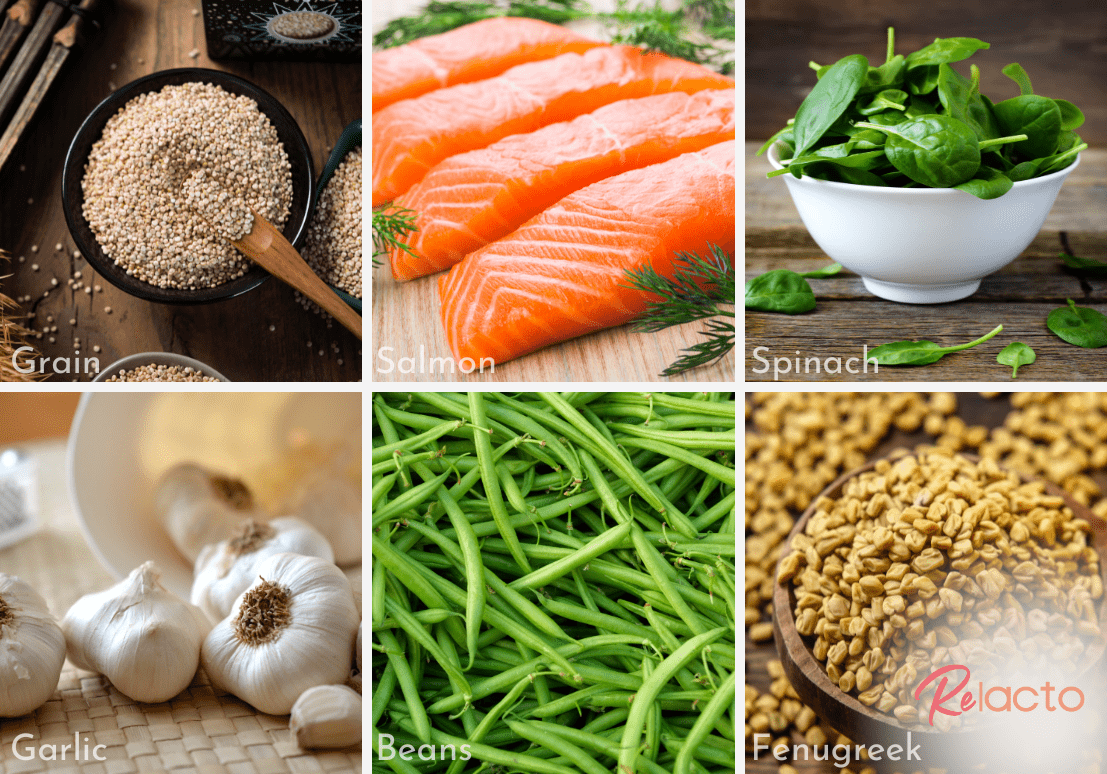5 Breastfeeding Problems & How to Solve Them

Breastfeeding is a beautiful experience, but it can be challenging. If you’re breastfeeding and experiencing challenges, don’t worry: There are solutions! In this article, we’ll discuss common breastfeeding issues, how to solve them and the best ways to incorporate lactogenic foods into your daily meals.
Low Milk Supply
Low milk supply is a common breastfeeding problem that can be easily resolved with the right approach.
To increase your milk production, focusing on eating foods rich in lactogenic ingredients is essential. These are natural compounds that help boost milk supply by increasing prolactin levels. The six most effective lactogenic foods include ginger, fennel, papaya, moringa oleifera and garlic. You should eat these foods (or include them in your meals) regularly throughout the day.
Breast Engorgement
If you’re new to breastfeeding, you might have heard the term “engorgement” but not really know what it means. Engorgement is when your breasts become swollen, tight and painful due to excess milk. This happens during the first few days after birth when your body adapts to produce milk for your baby and with each subsequent feeding as they grow older.
Suppose you experience any pain or discomfort while breastfeeding (or even if there are no signs at all). In that case, it’s crucial that you seek help from a lactation consultant or medical professional right away so they can diagnose why these symptoms are happening and how best to treat them before they get worse.
Sore or Cracked Nipples
The next issue you may encounter is sore or cracked nipples. This can happen if your baby has a strong suck and pulls too hard on the nipple, causing it to rub against the roof of their mouth. It can also happen if you don’t have enough milk yet, and your little one is trying hard to get some out.
If you are experiencing this problem, consider lactogenic foods.
You should eat foods high in protein, such as chicken breast or fish (especially salmon), cottage cheese or yoghurt with active cultures, which help increase milk production. Avoid spicy foods and any dairy products that contain lactose, like ice cream and cheese, because these can cause gas pains for your baby, making them pull harder during feeding.
Mastitis (Breast Infection)
Mastitis is an infection of the breast tissue. It can be caused by a blocked milk duct or improper positioning, leading to inflammation and breast tissue irritation. You’ll experience breast pain and possibly chills if you have mastitis.
Mastitis usually clears up within two weeks—as long as you get to rest and take antibiotics if prescribed by your doctor. Still, it’s vital not to ignore symptoms like fever or chills because they could indicate other health problems such as pneumonia (a lung infection) or sepsis (blood poisoning).
Latching Issues
If your baby is having trouble latching on to the breast, here are some things you can do:
- Ensure you don’t hold your baby too tightly or push them onto the nipple. This can be very uncomfortable for both of you, and it may make it harder for the baby to get milk out of your breast.
- Try different positions—some mothers find that one position works better than another when breastfeeding. If one doesn’t work well, try another until you find something that works well for both of you!
- Ensure that there is no air between their mouth and nipple before trying again; this could also cause feeding problems if an air bubble prevents them from getting any milk!

Tips to Incorporate Lactogenic Foods into Daily Meals
- Ginger: Ginger is an excellent lactogenic food that can be added to many lactation meals, such as stir-fries and soups. You can also drink ginger tea for extra benefits.
- Fenugreek: Fenugreek seeds are a popular spice in Indian cuisine but can also be used as a herbal supplement. When taken before bedtime on an empty stomach, fenugreek has been shown to increase milk supply.
- Papaya: Papayas contain a natural enzyme called papain, which breaks down proteins found in meat and dairy products, making them easier for your body and your baby’s digestive system to digest. Ensure not only eat the fruit; try incorporating it into smoothies or baking recipes too! Papayas are excellent foods to increase milk supply.
- Moringa Oleifera: This plant contains all eight essential amino acids infants need during their first year of life (which means it’s excellent if you’re breastfeeding twins). This ingredient is often incorporated into baby formulas because it helps boost immunity while providing plenty of vitamins A & C, which help promote healthy skin growth.
- Fennel: This versatile vegetable with a faint aniseed flavour has a long history of use as a galactagogue – a food that boosts milk supply. Fennel is believed to act as a hormone modulator, reducing the inhibitory effects of other hormones, such as dopamine, on breast milk production. It also helps in ensuring a smooth flow of milk. You can add raw fennel to salads, use it as a base for soups and stews, or roast it as a side dish. The seeds can be used as a spice in cooking or brewed into a soothing tea. Don’t forget the fronds, which can be used like any other fresh herb to add flavour and nutrients to your meals. Incorporating fennel in your meals helps increase breast milk supply and aids digestion.
- Garlic: This culinary staple is another food believed to have lactogenic properties. One of the interesting benefits of consuming garlic while breastfeeding is that it changes the taste and odour of the breast milk, giving it a more pleasant flavour and smell. This can help with the introduction of breast milk to your baby and encourage them to latch on for longer periods. You can easily incorporate garlic into your daily meals. Saute it in olive oil for a pasta sauce, roast it for a mild and sweet addition to your mashed potatoes, or chop it fresh into salads for a burst of flavour. You might also try incorporating it into soups or stews for added depth and complexity of flavour. Consuming garlic regularly may support your breastfeeding journey while adding delicious flavours to your meals.
Conclusion
In summary, we trust that this comprehensive guide has provided invaluable insights for nursing mothers who have questions about starting or increasing breast milk food through dietary means. Understanding the relationship between diet and lactation is vital in ensuring both mother and baby’s health. We are committed to providing you with up-to-date and scientifically-backed information.
Introducing ReLacto
As Singapore’s trusted lactation meal delivery service, we are committed to providing solutions to support you during this significant phase of your life.
Our dietitian-guided menu boasts over 100 varieties of fusion and traditional Chinese meals, each thoughtfully designed to cater to your unique lactation needs. These lactation-friendly meals are not only nourishing but also delicious, offering a balance for your dietary requirements.
Each meal seamlessly incorporates vital lactation-supporting ingredients, providing you with the essential nutrients you need as a breastfeeding mother. We understand that each body responds differently to various foods, so while we provide general guidelines, we encourage you to observe your body’s response and your baby’s reactions.
What’s more, each of our meals is paired with a unique lactation drink to enhance your lactation further. We are dedicated to your well-being and are ready to assist you with any concerns you may have.
At ReLacto, we are here to make it a rewarding and stress-free experience for you. Trusting in us is choosing to prioritise your health and your baby’s growth.







